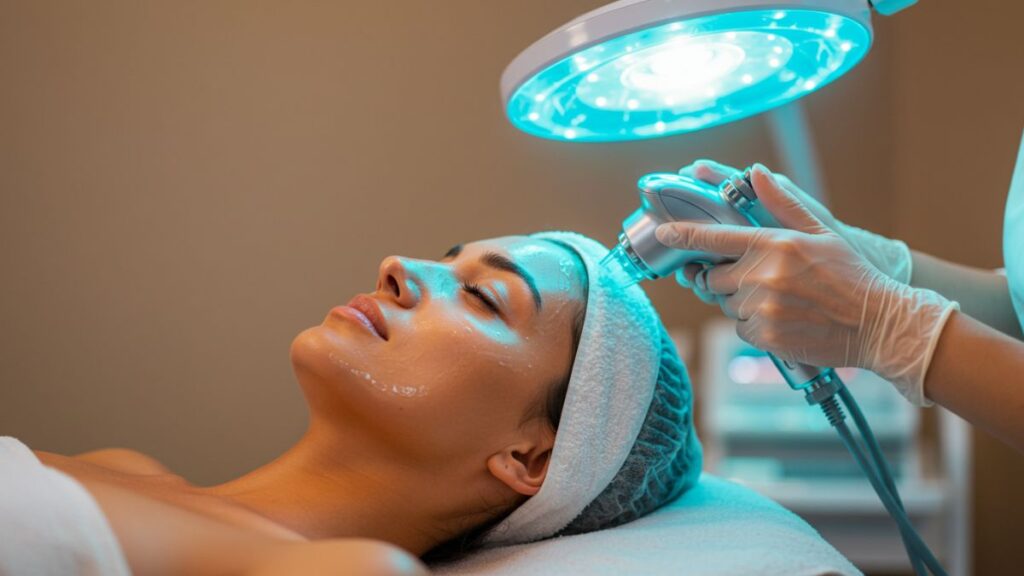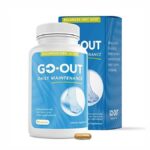Introduction
In today’s world, where stress, pollution, and fast-paced lifestyles are the norm, our skin often becomes the first casualty. Dehydration, dullness, premature aging, and breakouts are common concerns faced by people of all ages. Among the many skin treatments available, the Facial Oxy Treatment, also known as an oxygen facial, has emerged as a revolutionary solution to rejuvenate and hydrate skin without any downtime or harsh side effects.
Loved by celebrities, dermatologists, and skincare enthusiasts alike, facial oxy treatment is designed to infuse the skin with oxygen and essential nutrients. It’s a non-invasive, pain-free, and instantly gratifying solution that leaves your skin looking refreshed, radiant, and youthful.
This comprehensive guide covers everything you need to know about facial oxy treatment—from how it works and its benefits to aftercare tips, suitability, and myths versus facts. Let’s dive in!
Table of Contents
-
What Is Facial Oxy Treatment?
-
History and Evolution of Oxygen-Based Skincare
-
How Facial Oxy Treatment Works
-
Key Components and Ingredients Used
-
Step-by-Step Breakdown of the Procedure
-
Immediate and Long-Term Benefits
-
Ideal Candidates for the Treatment
-
Comparing Facial Oxy Treatment with Other Facials
-
Frequency and Maintenance
-
Side Effects and Safety Considerations
-
At-Home vs. Professional Oxy Treatments
-
Facial Oxy for Different Skin Types
-
Use in Anti-Aging and Acne Therapy
-
Oxygen Facials and Celebrities
-
Cost Analysis and What Influences Pricing
-
Common Myths and Misconceptions
-
Tips for Enhancing Your Results
-
Skincare Routine After a Facial Oxy Treatment
-
Natural Alternatives and Adjuncts
-
Conclusion and Final Thoughts
-
Frequently Asked Questions (FAQs)
What Is Facial Oxy Treatment?
Facial oxy treatment is a non-invasive skincare procedure that delivers a stream of high-pressurized oxygen infused with vitamins, minerals, botanical extracts, and essential nutrients directly into the skin. The goal is to improve skin hydration, increase circulation, and promote collagen production.
This treatment is ideal for individuals looking for an instant glow, rejuvenation, and overall skin enhancement without downtime or irritation. It’s suitable for most skin types and has become a go-to beauty solution for red-carpet events and important occasions.
History and Evolution of Oxygen-Based Skincare
The idea of using oxygen for skin health dates back to the medical field, where oxygen therapy was used to heal wounds and stimulate cellular function. Skincare specialists soon adapted the concept for cosmetic use, developing devices that could safely deliver oxygen to the epidermis.
By the early 2000s, luxury spas began offering oxygen facials as a premium service. Over the years, the technology evolved, and the treatment gained widespread popularity due to its visible, immediate results and non-invasive nature.
How Facial Oxy Treatment Works
The science behind facial oxy treatment is rooted in cellular respiration and rejuvenation. Skin cells need oxygen to function properly, but environmental stressors and aging can reduce oxygen levels in the skin. This treatment combats that by:
-
Cleansing the skin to remove debris and dead skin cells.
-
Delivering oxygen through a device that sprays or infuses it into the skin.
-
Infusing serums containing hyaluronic acid, peptides, and antioxidants to nourish the skin deeply.
The oxygen facilitates better absorption of the active ingredients, making the skin look hydrated and plump instantly.
Expand your knowledge and check out more posts on our blog!
Key Components and Ingredients Used
Some of the most common ingredients in the oxygen facial serum include:
-
Hyaluronic Acid: Deeply hydrates and retains moisture.
-
Vitamin C: Brightens skin and combats pigmentation.
-
Peptides: Encourage collagen production for firmness.
-
Botanical Extracts: Soothe inflammation and reduce redness.
-
Niacinamide: Improves texture and tightens pores.
Step-by-Step Breakdown of the Procedure
A professional facial oxy treatment typically includes:
1. Cleansing
Removes surface oils, impurities, and makeup.
2. Exfoliation
Light exfoliation opens the skin for better penetration.
3. Oxygen Infusion
A jet or wand delivers a blend of oxygen and serums into the skin.
4. Mask or Serum Application
Depending on your skin concern, a hydrating or anti-aging serum is applied.
5. Moisturizer and SPF
A final layer of moisturizer and sunblock seals in nutrients and protects the skin.
Immediate and Long-Term Benefits
Immediate Benefits:
-
Instant glow
-
Reduced puffiness
-
Plumper skin
-
Improved texture
Long-Term Benefits:
-
Increased collagen production
-
Reduced fine lines and wrinkles
-
Fewer breakouts
-
Brighter, more even skin tone
Ideal Candidates for the Treatment
Facial oxy treatment is suitable for:
-
Dry or dehydrated skin
-
Dull or aging skin
-
Sensitive or irritated skin
-
Oily and acne-prone skin
-
Post-procedure skin healing
It’s particularly beneficial before important events due to its glow-inducing effects.
Want to hear more tips? Please look at our page for more informative and helpful blog posts.
Comparing Facial Oxy Treatment with Other Facials
| Feature | Facial Oxy Treatment | Classic Facial | Chemical Peel |
|---|---|---|---|
| Invasiveness | Non-invasive | Minimal | Mild to moderate |
| Downtime | None | None | 2–7 days |
| Skin Brightening | High | Moderate | High |
| Ideal For | All skin types | Most | Acne, scars |
Frequency and Maintenance
For optimal results, a series of 4–6 treatments spaced 1–2 weeks apart is recommended. After the initial series, monthly maintenance treatments can keep skin glowing and hydrated.
Side Effects and Safety Considerations
Facial oxy treatments are generally very safe. However, minor side effects may include:
-
Mild redness (temporary)
-
Slight tingling or tightness
-
Sensitivity to touch
These usually resolve within a few hours. Always consult a professional to determine the best approach for your skin type.
At-Home vs. Professional Oxy Treatments
While home devices claim to offer oxygen facials, professional treatments provide:
-
Higher pressure and deeper infusion
-
Medical-grade serums
-
Expert skin analysis
-
Lasting results
At-home kits may be good for maintenance but cannot replace clinical precision.
Facial Oxy for Different Skin Types
Dry Skin
Deep hydration and plumping for flaky, tight skin.
Oily Skin
Reduces excess oil and balances sebum production.
Sensitive Skin
Soothing and gentle with anti-inflammatory ingredients.
Aging Skin
Boosts collagen and elasticity for youthful appearance.
Use in Anti-Aging and Acne Therapy
Anti-Aging
By delivering oxygen and peptides to skin cells, it encourages regeneration and reduces signs of aging.
Acne
The antibacterial properties of oxygen help reduce acne-causing bacteria and inflammation.
Oxygen Facials and Celebrities
From Madonna to Kim Kardashian, celebrities have long praised oxygen facials for their red-carpet glow. The treatment’s ability to offer immediate results without irritation makes it ideal for events, photoshoots, and TV appearances.
Cost Analysis and What Influences Pricing
Facial oxy treatment prices vary based on location, experience of the practitioner, and added enhancements.
Typical Price Range: $80 to $250 per session
Factors influencing price:
-
Clinic reputation
-
Length and depth of treatment
-
Add-ons like LED therapy or specialty serums
Common Myths and Misconceptions
Myth 1: Oxygen facials are just water and air.
False. They involve specialized serums and pressurized delivery systems.
Myth 2: They don’t work on dark skin tones.
Not true. Facial oxy treatment is suitable for all skin types and tones.
Myth 3: Oxygen facials thin the skin.
Incorrect. They strengthen and hydrate the outer layer without damage.
Tips for Enhancing Your Results
-
Drink plenty of water before and after the treatment.
-
Avoid makeup for 24 hours post-treatment.
-
Stick to a gentle skincare routine post-facial.
-
Use sunscreen daily to protect glowing skin.
Skincare Routine After a Facial Oxy Treatment
-
Morning: Gentle cleanser, vitamin C serum, lightweight moisturizer, SPF.
-
Evening: Cleanser, hydrating serum or oil, night cream.
-
Avoid exfoliants or retinol for at least 48 hours post-treatment.
If you found it helpful, be sure to check out our blog for more informative resources.
Natural Alternatives and Adjuncts
While oxygen facials offer fast results, natural methods to support your glow include:
-
Facial steaming
-
Herbal face masks
-
Green smoothies and antioxidants in diet
-
Proper hydration and sleep
Use these in between treatments for ongoing skin health.
Conclusion and Final Thoughts
Facial oxy treatment is a powerful, non-invasive way to rejuvenate your skin. With benefits ranging from hydration and brightness to anti-aging and acne reduction, it’s no wonder this treatment has become a staple in both professional skincare and personal beauty routines.
Whether you’re prepping for a big event or just want to pamper yourself with a luxurious skin boost, the facial oxy treatment offers visible, feel-good results with minimal risk and no downtime. It’s truly the glow-up your skin deserves.
Frequently Asked Questions (FAQs)
1. What is Facial Oxy Treatment?
Facial oxy treatment is a non-invasive skincare procedure that infuses oxygen and nutrients into the skin to hydrate, brighten, and revitalize.
2. How often should I get an oxygen facial?
For best results, start with 4–6 sessions spaced 1–2 weeks apart, then maintain with one treatment per month.
3. Is the treatment safe for sensitive skin?
Yes, facial oxy treatment is gentle and safe for sensitive skin, including rosacea-prone or post-procedure skin.
4. Can men benefit from facial oxy treatments?
Absolutely! It’s suitable for all genders and helps manage breakouts, dryness, and signs of aging.
5. Does it hurt or involve needles?
No, it’s completely non-invasive and painless. The oxygen is delivered using a gentle stream of pressurized air.







